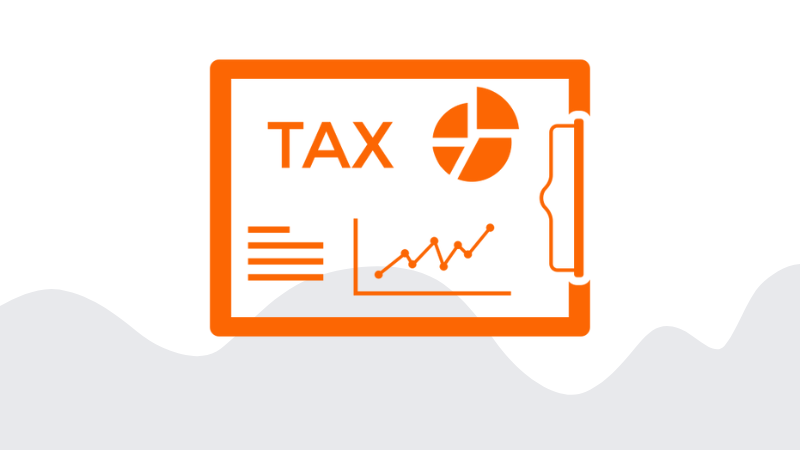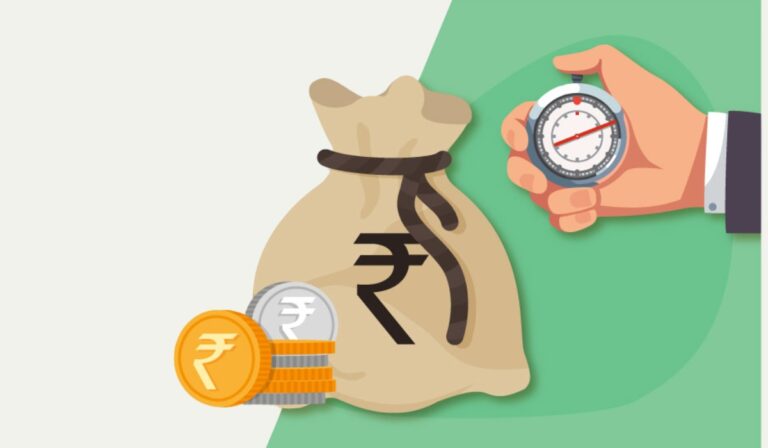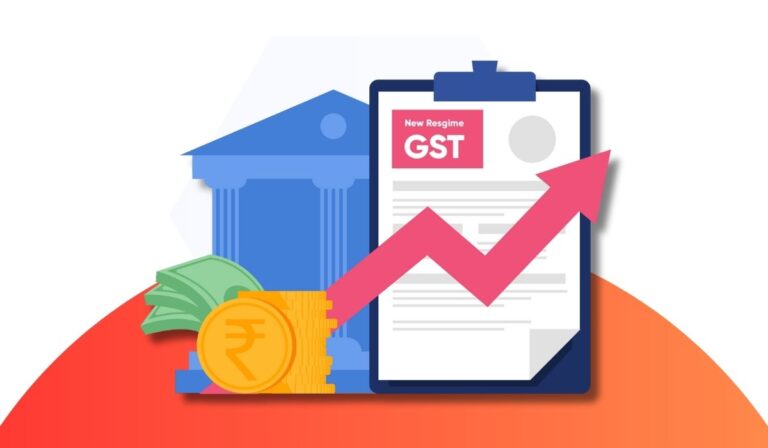Income tax slabs are announced by the Finance Minister in the annual budget. These income tax slabs are crucial for taxpayers as it helps to calculate the total tax that an individual has to pay for a fiscal year. As of now, no new major changes have been introduced by the government in the interim budget. In this guide, you can learn about both old and new regimes and tax rates.
What is the Income Tax Slab?
The Income Tax slab system in India has been introduced by the government to categories your income into different ranges. You have to pay income tax based on the range wherein your income falls. This is a progressive system and people with higher incomes pay a large share of their earnings in taxes. The tax calculation under the Income Tax slab is done based on two tax types namely, direct taxes and indirect taxes. As per Interim Budget 2024-25, there are no changes in the income tax slabs for this year.
FY 2023-24 & AY 2024-25: Overview of Tax Regimes
A brief introduction to the old and new income tax regimes
Old Tax Regime
The old tax regime has been traditionally used to deduce income tax. It offers a wide range of deductions under various sections of the Income Tax Act (like Section 80C for investments, Section 24 for home loan interest, etc.). These deductions can significantly reduce your taxable income. However, it is extremely complex and requires maintaining records and receipts for claimed deductions.
New Tax Regime
The new tax rate regime of Income Tax was introduced by the Finance Minister in Budget 2020 to simplify tax filing. To ensure this, the new tax regime offers low tax rates for most of the income tax slabs. However, only a few deductions apply to this regime. For example, the government has retained the standard deduction of Rs 50,000 which eliminates the need to track the deductions.
Get Personal Loans upto ₹10 lacs
Starting at 10.5% per annum*
Highlighting the key differences and implications for taxpayers
| Feature | Old Tax Regime | New Tax Regime |
| Implications | It requires detailed record keeping and is a rather complex tax filing process, potentially leading to errors | The new tax regime is simple to understand but offers very few chances for tax savings |
Understanding the Old Regime Tax Rates
Detailed breakdown of income tax slabs under the old regime:
|
Income Slabs |
Individuals (for all age categories) |
|
Up to Rs 2,50,000 |
Nil |
|
Rs 2,50,001 – Rs 5,00,000 |
5% |
|
Rs 5,00,001 – Rs 7,50,000 |
10% |
|
Rs 7,50,001 – Rs 10,00,000 |
15% |
| Rs 10,00,001 – Rs 12,50,000 |
20% |
| Rs 12,50,001 – Rs 15,00,000 |
25% |
| Rs 15,00,001 and above |
30% |
Calculation examples to illustrate tax liabilities for different income brackets
Scenario 1: Income Below the Tax Bracket (No Taxable Income)
Income: Rs. 2,50,000
Standard Deduction: Rs. 50,000
Since the income (Rs. 2,50,000) is less than the minimum taxable income bracket (Rs. 3,00,000), there is no tax liability. The standard deduction of Rs. 50,000 further reduces the taxable income to zero.
Tax Liability: Rs. 0
Scenario 2: Income in the 5% Tax Bracket
Income: Rs. 4,50,000
Standard Deduction: Rs. 50,000
Calculation:
Taxable Income = Income – Standard Deduction
Taxable Income = Rs. 4,50,000 – Rs. 50,000 = Rs. 4,00,000
Tax Liability = Tax Rate x Taxable Income
Tax Liability = 5% x Rs. 4,00,000 = Rs. 20,000
Tax Liability: Rs. 20,000
Scenario 3: Income in the 20% Tax Bracket
Income: Rs. 13,00,000
Standard Deduction: Rs. 50,000
Calculation:
Taxable Income = Income – Standard Deduction
Taxable Income = Rs. 13,00,000 – Rs. 50,000 = Rs. 12,50,000
Here, we need to apply the slab system:
Tax on first Rs. 3,00,000 = 0% (no tax)
Tax on remaining Rs. 9,50,000 (12,50,000 – 3,00,000) = 20%
Tax on remaining amount = Tax Rate x Amount
Tax on remaining amount = 20% x Rs. 9,50,000 = Rs. 1,90,000
Total Tax Liability:
Tax on the first bracket (Rs. 3,00,000) + Tax on the remaining amount
Total Tax Liability = Rs. 0 + Rs. 1,90,000 = Rs. 1,90,000
Tax Liability: Rs. 1,90,000
Exploring the New Regime Tax Rates
Examination of Revised Income Tax Slabs and Rates in the New Regime
| Income Range |
Tax Rate |
| Up to Rs. 3,00,000 |
0% |
|
Rs. 3,00,001 – Rs. 6,00,000 |
5% |
| Rs. 6,00,001 – Rs. 9,00,000 |
10% |
|
Rs. 9,00,001 – Rs. 12,00,000 |
15% |
|
Rs. 12,00,001 – Rs. 15,00,000 |
20% |
|
Above Rs. 15,00,000 |
30% |
Comparative Analysis with the Old Regime to assess advantages and disadvantages
| Feature | Old Tax Regime | New Tax Regime |
| Tax Rates | Generally higher tax rates | Lower tax rates for most income slabs |
| Deductions | Wide range of deductions and exemptions under various sections (80C, 80D, 24, etc.) | Limited deductions (standard deduction, employer’s NPS contribution, specific home loan interest) |
| Tax Filing Complexity | More complex due to tracking and claiming deductions | Simpler due to the standard deduction |
| Benefits | Minimises tax savings and offers flexibility in tax planning | Lower tax rates with simple tax filing and suitable for those with minimal deductions. |
| Drawbacks | Requires maintaining records and receipts and is a complex tax-filing process | With its limited deduction options, this is not suitable for those with high investments |
Which Regime Suits You Best?
Factors influencing the choice between the old and new tax regimes:
1. Lower Income Earners (Upto Rs. 7 lakhs)
The new regime offers a tax rebate that can eliminate or significantly reduce your tax liability. Additionally, the standard deduction might be sufficient.
2. Middle Income Earners (Rs. 7 lakhs – Rs. 15 lakhs)
If you claim deductions exceeding the standard deduction (using Section 80C etc.), the old regime might be better. If deductions are minimal, the new regime’s lower tax rates could be advantageous.
3. High Income Earners (Above Rs. 15 lakhs)
The old regime might still be favorable, especially if you claim significant deductions that outweigh the new regime’s benefits.
4. High Deductions under Section 80C
If you invest heavily in PPF, ELSS, NPS, or claim deductions for medical insurance, home loan interest, etc., the old regime allows maximizing these deductions.
5. Limited Deductions
If you don’t utilise many deductions or your investments don’t qualify, the standard deduction in the new regime might be sufficient, and the lower tax rates could be more beneficial.
Tax-Saving options and Deductions under each Regime
| Old Regime | New Regime |
| Section 80C: Allows deductions for investments up to Rs. 1.5 lakh in instruments like PPF, ELSS, NPS, tuition fees, etc. | A fixed deduction of Rs. 50,000 is available to all taxpayers, eliminating the need to claim itemized deductions under Section 80C.
Allows deductions for specific expenses like employer’s contribution to NPS, interest on home loan for a self-occupied property (up to a certain limit), and family pension income |
| Section 80D: Deductions for health insurance premiums for self, spouse, parents, and dependent children. | |
| Section 24: Deduction for home loan interest paid. | |
| HRA Exemption: Exemption for House Rent Allowance received from your employer. | |
| LTA Exemption: Exemption for Leave Travel Allowance received from your employer. | |
| Other Deductions: Sections 80G (donations), 80E (education loan interest), 80TTA (interest on savings account), etc., offer deductions for specific expenses. |
Recent Updates and Amendments
Recent Changes in Tax Laws or Regulations affecting FY 2023-24 & AY 2024-25
Standard Deduction Introduced: A standard deduction of Rs. 50,000 has been introduced for salaried individuals and pensioners in both the old and new tax regimes. This simplifies tax filing and reduces taxable income for AY 2024-25.
Tax Rebate for Lower Income Groups: Those individuals who are earning up to Rs. 7 lakh annually now receive a tax rebate under the new tax regime. This means they may not have to pay any income tax if their taxable income falls below Rs. 7 lakh.
Highest Surcharge Rate Reduced: The highest surcharge rate for individuals earning over Rs. 5 crore has been lowered to 25% from 37%, resulting in a reduced tax burden for this group under the new regime.
Implications of these updates on taxpayers: The standard deduction of Rs. 50,000 applies to both regimes, effectively lowering taxable income for all taxpayers.
- The tax rebate under the new regime for incomes up to Rs. 7 lakh can significantly reduce or eliminate tax liability for this group.
- The standard deduction reduces the need to track and claim itemized deductions under Section 80C. This will potentially simplify tax filing for people who choose the new tax regime.
Navigating Tax Planning Strategies
Tips for optimizing tax planning in alignment with the chosen regime:
- Start planning your taxes at the beginning of the financial year (April 1st). This allows for better research on tax-saving options and avoids rushed decisions.
- Both the old and new tax regimes have different deduction and exemption structures. You should analyse your income, deductions, and tax benefits offered under each regime to choose the one that minimises your tax burden.
- Utilise the Rs. 1.5 lakh deduction limit under Section 80C for investments like the Public Provident Fund (PPF), Equity Linked Savings Scheme (ELSS), National Pension Scheme (NPS), etc.
- Claim deductions for medical insurance premiums (Section 80D), home loan interest (Section 24), education loan repayment (Section 8E), and charitable donations (Section 80G)
- The new regime offers a standard deduction that eliminates the need for many itemized deductions under Section 80C. Analyse if the standard deduction outweighs the deductions you would claim under the old regime.
- The new regime offers lower tax slabs compared to the old regime. If your income falls in a lower tax bracket, the new regime might be more beneficial.
Long-term financial planning considerations for minimising tax liabilities
- Maximize contributions to retirement accounts like 401(k)s, IRAs, or SEP IRAs (if self-employed). These allow contributions to grow tax-deferred and may offer tax-free withdrawals in retirement.
- Consider Roth IRAs or Roth 401(k)s for after-tax contributions. These offer tax-free qualified withdrawals in retirement. This strategy is beneficial if you expect to be in a lower tax bracket in retirement.
- Choose investments known for tax efficiency, such as low-turnover mutual funds that minimize capital gains distributions.
- Sell investments at a loss to offset capital gains from other holdings, potentially reducing your tax bill. However, consult a financial advisor to ensure compliance with tax regulations.
Frequently Asked Questions (FAQ)
Ques: Is filing income tax returns compulsory?
Ans: No, you will be required to file income tax returns only if you fall under the category of taxpayer.
Ques: Are there separate slab rates for different categories?
Ans: No, income tax slab rates are not different for categories rather they are separated based on an individual’s income.
Ques: What is the 80C limit in Income Tax?
Ans: The Section 80C limit for FY 2023-24 and AY 2024-25 is Rs. 1.5 lakh.
Ques: What will be the impact of the new income tax regime on my Income Tax
Calculation?
Ans: The new regime offers a lower tax rate structure compared to the old regime. However, it also comes with limited deduction options.
Ques: What’s not allowed under the new tax rate regime?
Ans: In the new tax rate regime, one cannot claim deductions under Income Tax Section 80C.
Ques: What’s retained under the new tax rate regime?
Ans: Only the standard deduction equal to Rs 50,000 is retained under the new tax rate regime.
Ques: Which entities are required to file income tax returns mandatorily?
Ans:If you are an Indian citizen with the minimum income falling under the new/old tax regime then you have to file income tax returns.
Ques: Can I avail of a Standard Deduction in the New Tax Regime?
Ans: Yes, you can avail of Standard Deduction in New Tax Regime.
Ques: Do I need to file an Income Tax Return (ITR) if my annual income is below Rs 2.5 lakh?
Ans: You generally don’t need to file an ITR if your income is below the basic exemption limit, which could be Rs. 2.5 lakh or higher depending on your age and filing status.
Ques: Can you avail the standard deduction on a salary of Rs. 50,000 under the new tax regime?
Ans: Yes, you can avail of the standard deduction of Rs. 50,000 under the new tax regime regardless of your income level.
Ques: Can we change the tax regime every year?
Ans: No, you cannot switch between the old and new tax regimes every year in India. You have to choose one regime for the entire financial year.
Ques: Are there any conditions for opting for a New Tax Regime?
Ans: There are no specific conditions to opt for the new tax regime.
Ques: What is 87A in Income Tax?
Ans: Section 87A deals with a concessional tax regime for persons with a total income of up to Rs. 5 lakh.
Conclusion
We hope you got a detailed idea of the income tax slabs for FY 2023-24 & AY 2024-25. Before deciding your applicable tax regime, it is advised to do all your calculations. This helps to get a better understanding of the tax regime that suits you and helps you make an informed decision for the upcoming fiscal year.
Also, Read:




